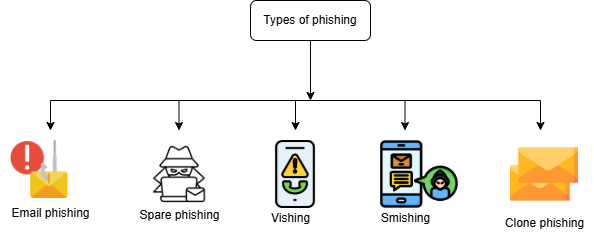By: Vanna karthik; Vel Tech University, Chennai, India
Abstract
One of the most common cybersecurity risks is phishing, which targets people and organizations in an attempt to steal confidential data. A thorough manual on phishing detection and prevention techniques is presented in this article. It talks about the different kinds of phishing attempts, their effects, and the techniques used to reduce the dangers. This study intends to raise awareness and offer useful solutions for identifying and averting phishing attempts by reviewing the literature that has already been written about the subject and looking at successful defenses. In order to protect against phishing attacks, the study ends with suggestions for cybersecurity best practices.
Introduction
As digital interactions have grown in popularity, fraudsters have created advanced phishing techniques to take advantage of human weaknesses. Phishing attacks frequently use phones, emails, websites, and messages to trick people into giving financial and personal information[1]. Phishing is still a serious danger despite cybersecurity breakthroughs because attackers’ strategies are always changing. In order to offer a comprehensive strategy for reducing phishing risks, this article investigates phishing attack mechanisms, detection methods, and preventive measures. People and organizations can lessen their vulnerability to phishing assaults by being aware of the fundamentals of the technique and implementing strong security procedures.
Understanding Phishing[2]
Phishing attacks use false communications, usually via social media, emails, or phony websites, to fool victims into disclosing personal information such login passwords and bank account information. The following are typical forms of phishing:
- Email Phishing – fake emails imitating trustworthy sources.
- Spear Phishing – Attacks that target particular people or groups.
- Vishing and Smishing – Phishing efforts with SMS messages and voice calls.
- Clone Phishing – Attackers use malicious alterations to imitate a genuine email.

Phishing Detection Techniques[3]
Various detection systems have been developed in order to effectively counteract phishing threats:
Machine Learning and AI: To detect phishing attempts, algorithms driven by AI examine URLs, email content, and behavioral patterns.
Heuristic-Based Detection: Systems that rely on rules are able to identify irregularities in email headers and website structures.
Whitelists and blacklists: permitting only reliable sources and blocking known harmful domains.
User Awareness Training: By teaching users to spot and report phishing attempts, dangers are greatly decreased.

Best Practices for Phishing Prevention[4]
Technology and user awareness must be combined to stop phishing attempts. The actions listed below improve security:
Turn on multi-factor authentication (MFA), which provides an additional degree of protection on top of passwords.
Verify Email Sources: Steer clear of suspicious links and always verify sender addresses.
Use Secure Browsing: Make use of security programs that prevent access to harmful websites.
Update Software Frequently: Vulnerabilities are reduced by maintaining systems and apps up to date.
Use email filtering: Spam filters limit the number of phishing attempts that arrive in inboxes.
Conclusion
Phishing is still a problem in cybersecurity, and attackers are always improving their tactics. This study highlights how crucial it is to combine proactive security awareness training with technical solutions like heuristic-based filtering and AI-driven detection systems. To reduce phishing risks, organizations need to implement a multi-layered security plan that includes user education, email screening, and robust authentication procedures. Future studies should concentrate on strengthening user resistance to phishing assaults and developing automated detection methods. Businesses and individuals can strengthen their defenses against phishing attacks by putting cybersecurity best practices into practice.
References
- B. M. Berens, K. Dimitrova, M. Mossano, and M. Volkamer, “Phishing awareness and education – When to best remind?,” in Proceedings 2022 Symposium on Usable Security, San Diego, CA: Internet Society, 2022. doi: 10.14722/usec.2022.23075.
- “What Are the Different Types of Phishing?,” Trend Micro. Accessed: Feb. 01, 2025. [Online]. Available: https://www.trendmicro.com/en_us/what-is/phishing/types-of-phishing.html
- N. Q. Do, A. Selamat, O. Krejcar, E. Herrera-Viedma, and H. Fujita, “Deep Learning for Phishing Detection: Taxonomy, Current Challenges and Future Directions,” IEEE Access, vol. 10, pp. 36429–36463, 2022, doi: 10.1109/ACCESS.2022.3151903.
- K. K. Singh Mer, V. B. Semwal, V. Bijalwan, and R. G. Crespo, Eds., Proceedings of Integrated Intelligence Enable Networks and Computing: IIENC 2020. in Algorithms for Intelligent Systems. Singapore: Springer Singapore, 2021. doi: 10.1007/978-981-33-6307-6.
- Lv, L., Wu, Z., Zhang, L., Gupta, B. B., & Tian, Z. (2022). An edge-AI based forecasting approach for improving smart microgrid efficiency. IEEE Transactions on Industrial Informatics, 18(11), 7946-7954.
- Mirsadeghi, F., Rafsanjani, M. K., & Gupta, B. B. (2021). A trust infrastructure based authentication method for clustered vehicular ad hoc networks. Peer-to-Peer Networking and Applications, 14, 2537-2553.
- Shaik D.A. (2024) Using AI to Combat Phishing Attacks, Insights2Techinfo, pp.1
Cite As
Karthik V. (2025) Phishing detection and prevention : A Complete Guide, Insights2techinfo pp.1